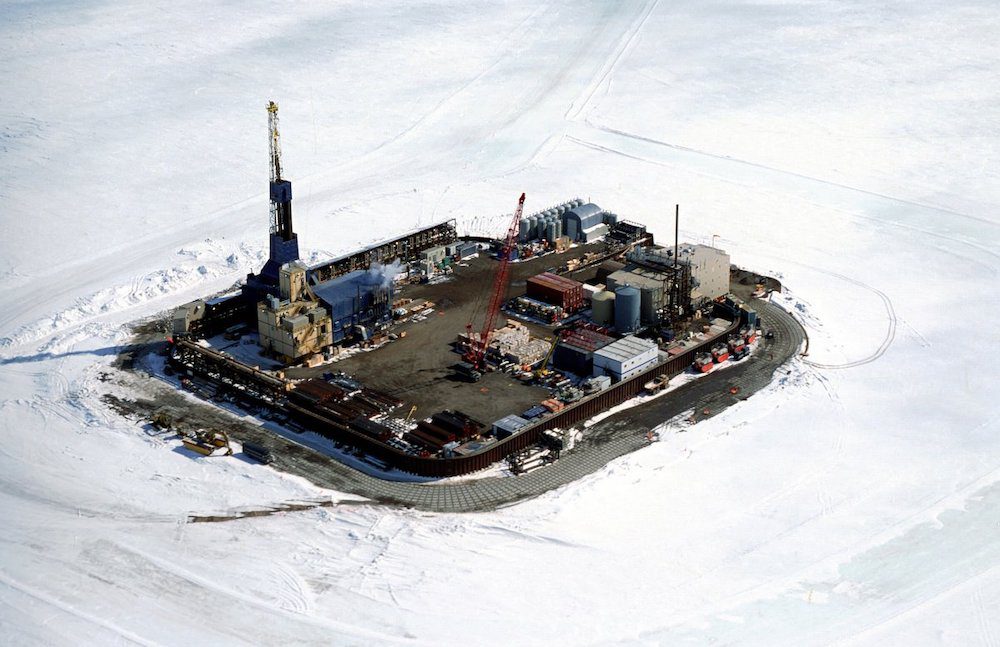File: U.S. Department of Interior
By Jennifer A. Dlouhy (Bloomberg) — The Trump administration has authorized Hilcorp Energy Co.’s plan to build an artificial gravel island in the Beaufort Sea north of Alaska and use it to extract crude — marking the first approval of an oil production facility in federal Arctic waters.
The Interior Department’s conditional approval — subject to seasonal restrictions and other required permits — represents a major milestone for Hilcorp’s planned Liberty Project in the Beaufort Sea. The company’s Alaska subsidiary aims to build its nine-acre gravel island and production facility in shallow waters about five miles off the coast and 20 miles east of Prudhoe Bay.
The planned production facility is unlike past Arctic oil ventures, such as Royal Dutch Shell Plc’s failed exploration campaign, which employed floating drilling rigs to hunt for crude 70 miles off the Alaska coast in the Chukchi Sea. And while Liberty is similar to four existing artificial islands near Alaska, those facilities are located inside state waters, outside the federal government’s jurisdiction.
“Responsibly developing our resources, in Alaska especially, will allow us to use our energy diplomatically to aid our allies and check our adversaries,” Interior Secretary Ryan Zinke said in a news release. “That makes America stronger and more influential around the globe.”
Hilcorp still must obtain required permits from state and other federal agencies to conduct the work. The Interior Department also made its approval contingent on a slew of conditions, such as limiting reservoir drilling to times when the Beaufort Sea is covered in a thick, 18-inch layer of solid ice. While whalers are hunting in the region, the company also must abstain from pile-driving and moving boats through the area.
The conditional approval “is the result of years of study and due diligence by multiple federal, state and local agencies and the project team,” Hilcorp Alaska Senior Vice President David Wilkins said by email. “If granted final approvals, the Liberty Project will provide decades of responsible resource development and strengthen the energy future of Alaska and the United States.”
Hilcorp also has agreed to turn down exterior lights, use black-out curtains and paint buildings in neutral tan rather than white or very dark colors, but environmentalists say those mitigation steps fall far short of what is needed to protect the fragile Arctic ecosystem from a potentially devastating oil spill. Some Alaska natives also have warned the artificial island could alter the migration routes of bowhead whales, pushing the animals further offshore and increasing the risk for subsistence whalers who hunt them.
The Beaufort Sea is now the epicenter of the oil industry’s interest in U.S. Arctic waters. The shallow waters are easier to plumb, already boast oil production operations and are close to onshore facilities at Prudhoe Bay. The Trump administration previously approved Eni SpA’s plan to drill up to four oil exploration wells in the Arctic, with the activity launched from another gravel island in state Beaufort waters.
© 2018 Bloomberg L.P

 Join The Club
Join The Club











